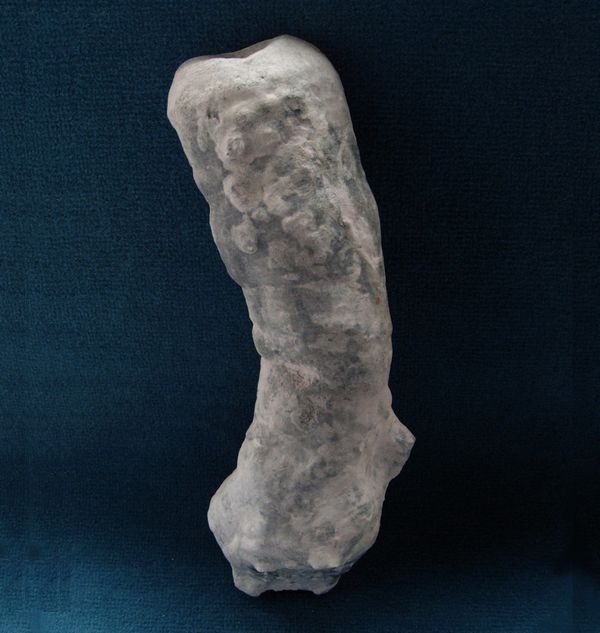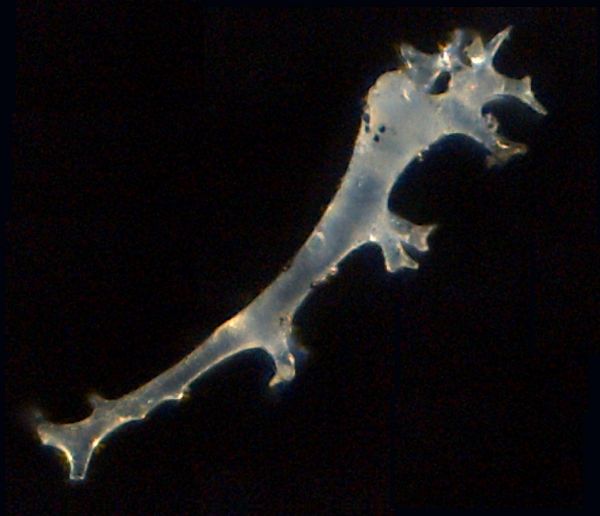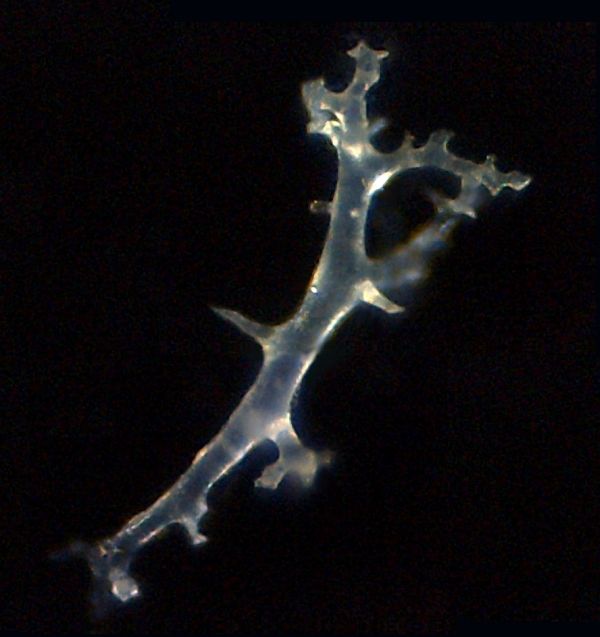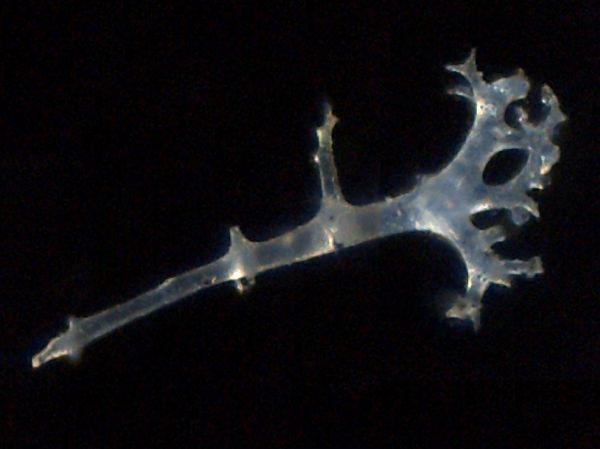
Rhabdotum columna
Schrammen, 1924
Rhabdotum columna is a rare species at Misburg and Höver.
The specimen is a fairly large cylinder with a truncated and depressed top and round margin. It has a deep and narrow, tube-like paragastral cavity and a number of strong roots around and below a thickened base. Some concentric, bulgy growth rings are visible, similar to those of Scytalia with which the species may be confused.
The specimen has a partially preserved, smooth cortex made up of densely arranged rhizoclones similar to those forming the choanosomal skeleton. Rhabdotum columna has a system of thin, longitudinal, upwardly diverging skeletal canals which give rise to a plumose fibre. The inhalent pore entrances of these canals are angular in cross section and are lined up longitudinally to some degree. This arrangement is thus similar to that of Seliscothon sp..

A second example of Rhabdotum columna (with a large octocoral base).




The skeleton of Rhabdotum columna is made up of rhizoclones and amphioxes; the latter have not been observed by earlier workers.
The pictures show some close-up photomicrographs of typical skeletal elements which bear some similarities to those of Seliscothon. However, arched rhizoclones common to Seliscothon are nearly absent from Rhabdotum and this correlates with the lack of rounded pores and aporhyses.
The sample studied by the author provided also numerous amphioxes, which are not as slender but otherwise indistinguishable from those of Seliscothon, thus supporting Schrammen's (1924) taxonomic classification of Rhabdotum as a genus of the Family Seliscothonidae. The amphioxes never have closed, pointed tips, but are rather tubiform, with a central canal widening towards the ends. The amphioxes may be slightly curved.


The plates show a collection of typical amphioxes and rhizoclones of Rhabdotum columna.